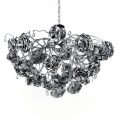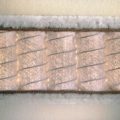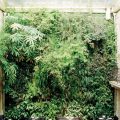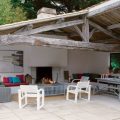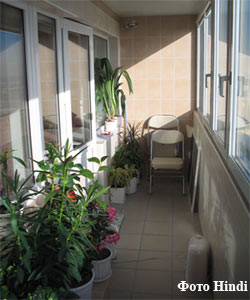 Light for plants Window facing west andeast, are almost equally illuminated, only at different times of the day, and practically do not require shading. For some reason, many people have a strange attitude to the northern windows, some even believe that they can not grow plants at all, it is not. There are a lot of plants (some of which we will give below) that grow well on northern windows, moreover, there are cases when cacti were grown on northern windows (and they are known to be light-loving), and they not only grew beautifully, but even blossomed . The larger the window, the more light the plants receive, the closer the plants are to the window, the better their illumination. For any arrangement of windows, you should not shade them with thick curtains (if the description of the plant is about shading, then a tulle curtain is enough, you can use a mosquito net if the plant is on the windowsill). Here is a list of plants most suitable for a window on either side of the world. But do not be surprised if you find the name of the same plant on the north and south window. There are plants that are very undemanding and can grow, and even bloom, on any window, unless, of course, other conditions are observed (for such plants, for example, passionflower).
Light for plants Window facing west andeast, are almost equally illuminated, only at different times of the day, and practically do not require shading. For some reason, many people have a strange attitude to the northern windows, some even believe that they can not grow plants at all, it is not. There are a lot of plants (some of which we will give below) that grow well on northern windows, moreover, there are cases when cacti were grown on northern windows (and they are known to be light-loving), and they not only grew beautifully, but even blossomed . The larger the window, the more light the plants receive, the closer the plants are to the window, the better their illumination. For any arrangement of windows, you should not shade them with thick curtains (if the description of the plant is about shading, then a tulle curtain is enough, you can use a mosquito net if the plant is on the windowsill). Here is a list of plants most suitable for a window on either side of the world. But do not be surprised if you find the name of the same plant on the north and south window. There are plants that are very undemanding and can grow, and even bloom, on any window, unless, of course, other conditions are observed (for such plants, for example, passionflower).
North windows
There are many beautiful indoor plants,which need diffused light and are therefore well suited for placement on the north window or in close proximity to it. Flowering plants for the north window include Saintpaulias, or African violets, exotic hybrids of Scherzer's anthurium, cyclamens, and Kalanchoes. Hybrid species of begonias, such as Begonia Lorraine, are also suitable for this. If there is enough space on the windowsill, you can place an unpretentious but beautifully flowering passionflower on it, which, although it loves the light, will also bloom on the north window (it is cut after flowering). Most bromeliads will also grow well on the north window. Some palm trees can be placed near the window, for example, the beautiful Howea or Date Palm Lorraine. On the north window it is necessary to take into account the temperature difference, that is, plants growing in warmer rooms, as a rule, need more water than plants growing in cooler rooms. Plants for the north window: Aglaonema, maidenhair fern, aspidistra, asparagus, aucuba, begonia angularis, biota orientalis, helxina, dracaena marginata, fragrant dracaena, zygocactus, saxifrage, kalanchoe, red karaguata, ragwort (not variegated), lygodium japonica, monstera, arrowroot, peperomia rotundifolia, peperomia gray and obtuse, nightshade, ferns, ivy, passionflower, sansevieria, scindapsus, spathiphyllum, selaginella, tolmia, fatschider, fatsia, ficus dwarf, philodendron climbing, fittonia, cissus rhombifolia, cineraria.
South Windows
Growing plants on a south-facing window is more troublesome,than on the northern one, since few plants can withstand prolonged exposure to direct sunlight. Often, during the hottest time of the day, you have to create shading, in the form of a gauze or tulle curtain. This is inconvenient because when you are at work, no one can do this and the plants may suffer. Therefore, you need to be especially careful when choosing plants for the windowsill of the southern window. Only the most resistant plants that need sun can be placed on the windowsill itself, for example, cacti and other succulents, fleshy hoya, profusely flowering stephanotis, passionflower, etc. If you read in the recommendations for caring for the plant that it loves the light, but needs shading, then place it on a table near the southern window under the protection of a tulle curtain. This place is ideal for such decorative foliage flowers as cyperus, chamaerops, cissus, coleus and evergreen myrtle. Plants for the southern window: Indian azalea, tree aloe, aloe khanburiana, bouvardia, jasmine sambac, camellia japonica, coleus blumei, mammillaria, prickly pear, sedum, livistona chinensis, plectranthus, fuchsia, haworthia, hoya, cerius, echinocactus.
East Windows
The eastern windows have much less light,than on the southern ones, and it differs in that in the morning the rays are not so scorching, and shading on the eastern windows is not required. Plants for the eastern window: Asparagus, aucuba, tree begonia, hairy begonia, metallic begonia, emerald begonia, griselinia, narrow-leaved dracaena, dracaena deremenskaya, butcher's broom, myrtle, ivy, cissus, pittosporum, Japanese fatsia, Usumbara violet, ficus, epiphyllum russeliana, epiphyllum obtuse.
Western Windows
West-facing windows tend to be warmer thaneastern, they are usually not shaded, but it is easier for the plant to get burned on a western window than on an eastern one. Plants for a western window: Asparagus, Begonia Rex, Billbergia drooping, Veronica Andersii, Gasteria, Eugenia, Jasmine low, Sansevieria, Strobilanthes, Phyllocactus Ackermanii, Phyllocactus Guntherii, Date palm, Cissus, Chamaerops, Eucalyptus, Aechmea. All the examples given are calculated for the plant to be placed on a windowsill, not in a room.
Examples of plants for those who focus not on the side of the world, but on the illumination of the room:
Light, without direct sunlight (window sill)windows where direct sunlight does not fall, or a place near a very bright window): Azalea, anthurium, asparagus, royal begonia, bromeliads, grapes, dizygoteka, dieffenbachia, zygocactus, columnea, monstera, peperomia, pilea, ivy, spathiphyllum, scindapsus, philodendron, fuchsia, chlorophytum, cyclamen, shefflera. Occasional direct sun (window sill or close to east or west window): Impatiens, Beloperone, Gynura, Zebrina, Capsicum, Codiaeum, Cuphea, Nertera, Poinsettia, Sansevieria, Plumbago, Saintpaulia, Solanum, Sparmannia, Tradescantia, Rubber Plant, Chlorophytum, Hoya, Chrysanthemum. Sunny window (window sill of south window or close to it): Agapanthus, Acacia, Bougainvillea, Bouvardia, Heliotrope, Hibiscus, Hippeastrum, Jasmine, Zebrina, Iresine, Cacti and other succulents, Callistemon, Coleus, Lantana, Citrus, Nerina, Oleander, Oxalis, passionflower, pelargonium, rose, celosia.
- Without exception, all flowering indoor plants prefer slightly brighter lighting than decorative foliage species, since they absolutely need light to form flower buds.
- Plants with variegated leaves require more light than plants with green leaves.
- Light walls in a room reflect light, which means they make the room brighter.
- Plants suffer if they are frequently moved from place to place, especially with different lighting conditions.
- In winter, plants should be placed closer to the window or additional light should be provided to the plant if signs of insufficient light appear.
- Dirty glass blocks up to 40% of light, so try to wash your windows more often. In winter, you can take advantage of the opportunity to wash the glass at any positive temperature.
- A newly transplanted or newly purchased plant needs to be shaded. And most plants need to be shaded from the midday sun.
- To ensure uniform formation of leaves, the plant should be periodically turned with different sides towards the light source (unless there are buds on it).
- Of all these rules there are exceptions, so read in detail about your plant and the rules of its content in the encyclopedia of indoor plants.
Signs of insufficient light
- The leaves are pale and smaller than they should be
- The plant does not bloom, or the flowers are small and not bright
- The stems of the plant are elongated with very narrow internodes
- The mottled leaves turn green
- The lower leaves turn yellow, wither and fall off
Signs of excess light
- Leaves sluggish, droop
- Leaves become faded
- Brown
By the way
How much light is needed for plants is not necessaryexplain even to a novice gardener. But the concepts of "light" and "dark" can be interpreted differently by everyone, based on their own feelings. However, for all plants without exception, we can say: The lighter, the better! If you cannot provide the plant with enough light either from natural or artificial sources, if you are interested in flowers as part of . It is best to place plants on the window sill or on stands, tables in front of the window. Some literary sources, classifying plants by their need for light, give such concepts as shade-loving plants or plants that can tolerate almost complete darkness for several weeks or months. In this case, I am talking about the forced placement of plants in the dark, when the interior designer wants it, so to speak, to decorate a dark corner. Any worthy botanist will tell you that there are no shade-loving plants, there are shade-tolerant ones. The greatest distance from the window for the most shade-loving plants should not exceed three meters. As for the sun, only a few plants can withstand long-term sunlight, while most plants should be shaded from direct sunlight. To make it clearer how to navigate the placement of plants, let's give an example. Cissus rhombifolia is placed in the center of a room with a southern window, in spring and summer the room has bright diffused light, the plant feels great. In autumn, sunny days are very rare, daylight hours are short, and the leaves of the cissus begin to turn yellow or brown and dry out, despite the fact that the window in the room faces south. By winter, the plant will lose half of its leaves, and by spring it will become very bald. A person who is not knowledgeable in indoor plant growing will blame it on insufficient watering and, God forbid, will flood it, but in fact, all you need to do is put the plant on the window sill or place a fluorescent lamp next to it. Thus, in spring and summer, cissus is placed in a room with a southern window, and in autumn and winter on the windowsill of this southern window. In general, windows facing west or east are suitable for cissus.
Artificial lighting
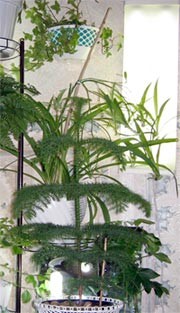 The use of artificial lighting is sometimesIt is simply necessary. Insufficient light causes the leaves to become small, the formation of chlorophyll in them is disrupted or stops, and the plant stretches out greatly. If it is not possible to provide the plant with natural light, you will have to resort to artificial lighting. Incandescent lamps have too many red, orange and infrared rays that accelerate vertical growth. Therefore, under incandescent lamps, plants stretch out, and the leaves can suffer from the heat emitted. Therefore, it is better not to use incandescent lamps. Fluorescent lamps are closest in their spectrum to natural lighting. They can be purchased at any hardware store. The lamp should be placed at a distance of approximately 15-30 cm from flowering plants and 30-60 cm from decorative foliage plants. If the stems of the plants begin to stretch, move the light source closer.
The use of artificial lighting is sometimesIt is simply necessary. Insufficient light causes the leaves to become small, the formation of chlorophyll in them is disrupted or stops, and the plant stretches out greatly. If it is not possible to provide the plant with natural light, you will have to resort to artificial lighting. Incandescent lamps have too many red, orange and infrared rays that accelerate vertical growth. Therefore, under incandescent lamps, plants stretch out, and the leaves can suffer from the heat emitted. Therefore, it is better not to use incandescent lamps. Fluorescent lamps are closest in their spectrum to natural lighting. They can be purchased at any hardware store. The lamp should be placed at a distance of approximately 15-30 cm from flowering plants and 30-60 cm from decorative foliage plants. If the stems of the plants begin to stretch, move the light source closer.




